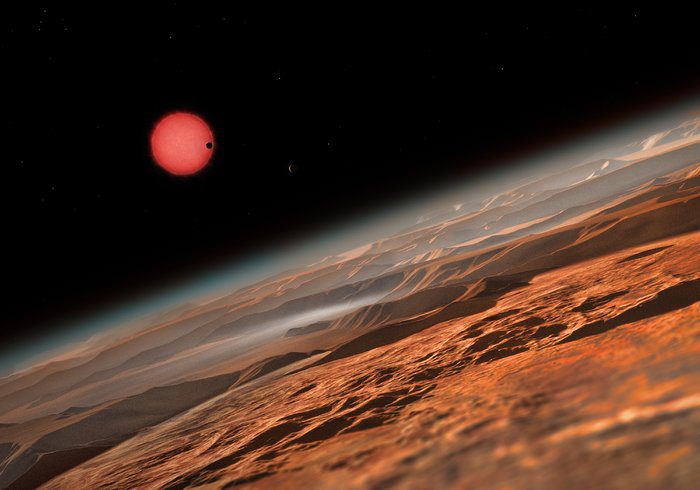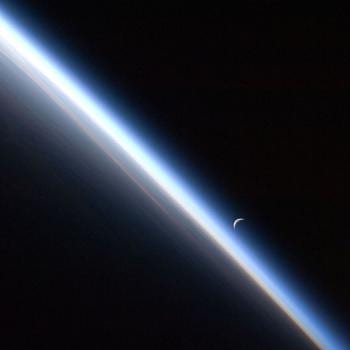
Some people, including several notable scientists puzzled by the difficult problem of the origin of life on Earth, have suggested that at least very simple living organisms might have come from extraterrestrial sources. A few have even hypothesized what is called directed panspermia, the idea that such organisms might have been deliberately “seeded” by advanced civilizations on other, distant planets.
I confess that directed panspermia appeals to me, and that it would be consistent, at least in its broad outlines, with my faith. But it’s also obvious that the hypothetical arrival of life from elsewhere in the universe — whether coincidental or deliberately intended by intelligence of some sort — would only push the question of life’s ultimate origin back a bit; it wouldn’t actually answer the question.
Anyway, that said, there’s an interesting little article in the August issue of Scientific American titled “Astro Worms” that’s relevant, particularly, to the possibility of accidental transfer of life to Earth from elsewhere in space — and, for that matter, to the potential transfer of life from Earth to, say, Mars. (Although several of my critics denounce my hatred for science and my ludicrous ignorance of it, I subscribe to Scientific American. Perhaps, they might want to suggest [if they feel any need at all to account for the seeming anomaly] that I do so on the time-honored principle of keeping my friends close and my enemies closer; I want to know what satanic wickedness those eeeeeeevil and godless scientists are up to!)
According to “Astro Worms,”a tiny species of nematode called Caenorhabditis elegans that is widely used in biological studies of various kinds is capable of surviving enormous g-forces. This ability is relevant to scenarios in which rocks might be cast into space from the surface of an extraterrestrial object by the force of an asteroid strike or in a massive volcanic eruption.
Human pilots lose consciousness when they pull about 4 or 5 g‘s — a g being the equivalent of the gravitational force at Earth’s surface. But an experiment conducted at the University of São Paulo in Brazil subjected C. elegans — which is only about millimeter long — to the equivalent of 400,000 [!] g‘s in an “ultracentrifuge,” and, at the end of the experiment, more than 96% of them were not only still alive but showed no adverse physical or behavioral changes at all.
Now, there are some differences between the conditions of this experiment and the hypothetical scenario of rocks blasted off of the surface of a planet. For example, the Brazilian ultracentrifuge required approximately five minutes to reach its maximum speed, whereas meteoric ejecta would likely reach maximum velocity within roughly one thousandth of a second. And then there are questions about temperature, vacuum, and cosmic radiation during an interplanetary voyage that would need to be addressed.
Still, it’s an intriguing study.
[For a certain small group of obsessive critics: This blog entry is partially made up of notes taken from an article. Those notes are notes. From an article. The article from which the notes were taken is identified. I make no claim to being an expert on astrobiology. I do not pretend that my notes here represent original research on my part. I do not claim this as an original publication. I do not list blog entries among my publications. Part of this blog entry is made up of notes. From an article. I’ve closely paraphrased what that article says. I’m simply sharing my notes. I wasn’t trying to pretend that I was writing a new article of my own. I was simply sharing my notes. If you want to brand me as a plagiarist for doing so, you’re perfectly free to do that. But doing that seems more than a little bit silly to me.]












